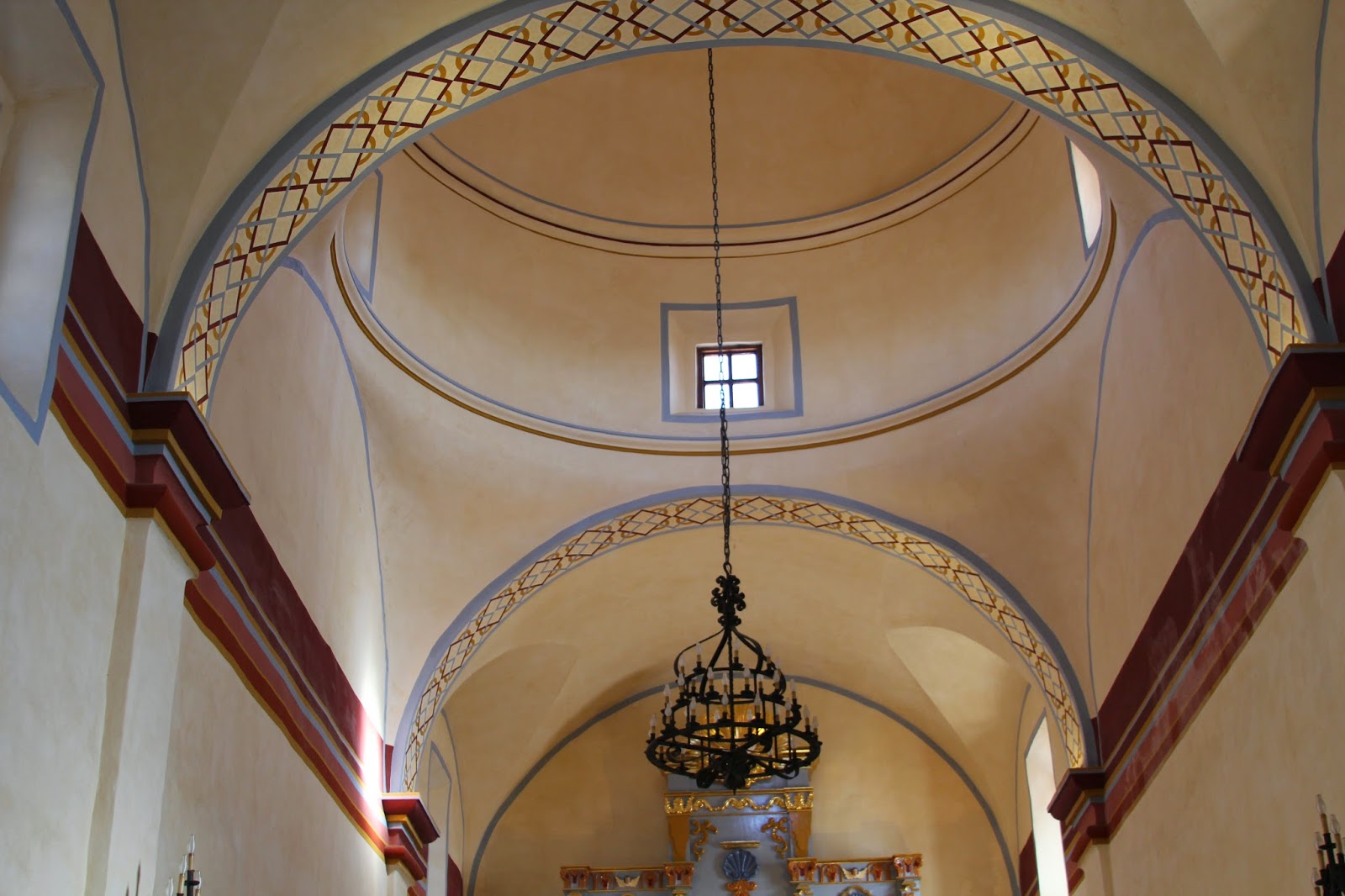Mission San Juan Capistrano was the third Mission on our tour. Originally built in East Texas in 1716 this mission was called Mission San Jose de los Nazonis to serve the Nazonis Indians. Because they were not successful, they moved the mission to the San Antonio River and renamed it San Juan Capistrano on March 5, 1731.
 |
| Map of Mission San Juan Capistrano. |
The mission had serious battles with epidemics of smallpox, measles and other European diseases along with being terrorized by bands of Apaches and Comanches. The mission still grew, and by 1762 there were 203 Indians living in the mission. The Indians were very industrious, and with a granary and textile shops, along with the aqueduct for watering, agriculture became the basis of their economy. The crops they grew included corn, beans, sweet potatoes, chilies, melons, cotton, sugar cane and squash. Outside the walls of the mission were orchards that grew peaches, pumpkins and grapes too. In 1762 there was said to have been around 3500 sheep and almost as many cattle at the mission. This was all possible because of the fertile soil, and the water supply from the irrigation system.

The church was constructed in 1772 and the exterior is covered with plaster. It was weather stained, cracking and in need of better support beams. The chapel went through a stabilization and preservation project in 2012 and was covered in an eggshell white plaster.
San Juan is still an active church and services are still held here. This would be such a neat place to be married. In the year 2000, three Spanish Colonial period pieces were stolen from the alter. These 3-4 foot statues are painted carved wood. These artifacts are not considered priceless because of their value as art, and they were not carved by someone famous, but they are priceless because of their religious history, and their importance to the people of the mission.
This was the site of an unfinished church started in 1780. In the Ruins lies the remains of the indigenous people that built the mission. The sign reads "Sacred Earth".
The chapel at this mission looks so beautiful with the white plaster. My husband took his favorite picture above with the sun behind the bell towers. Screen Saver!
Next Stop, Mission San Jose



























